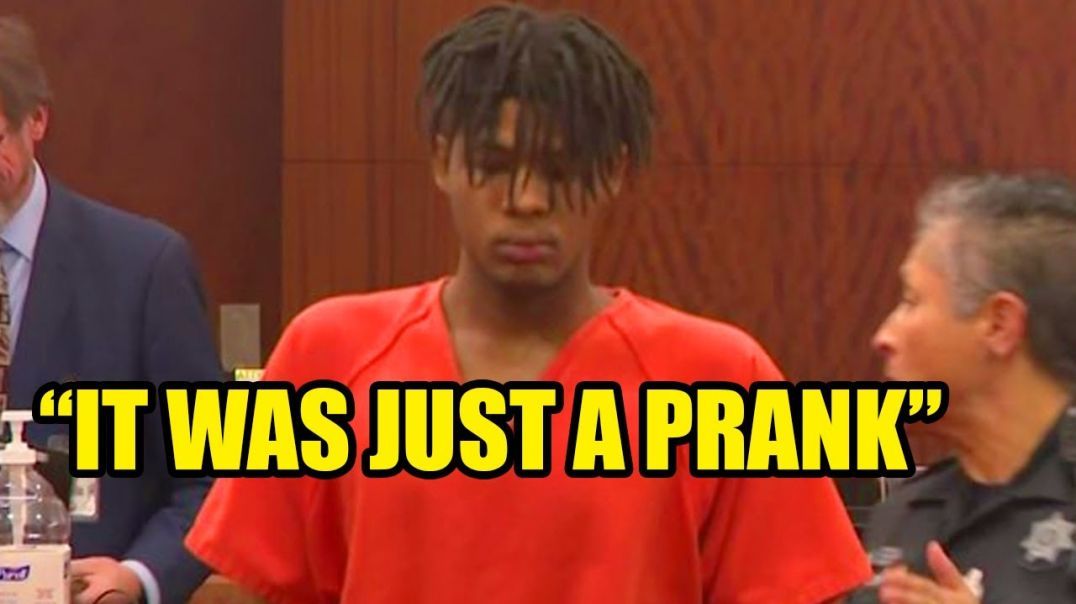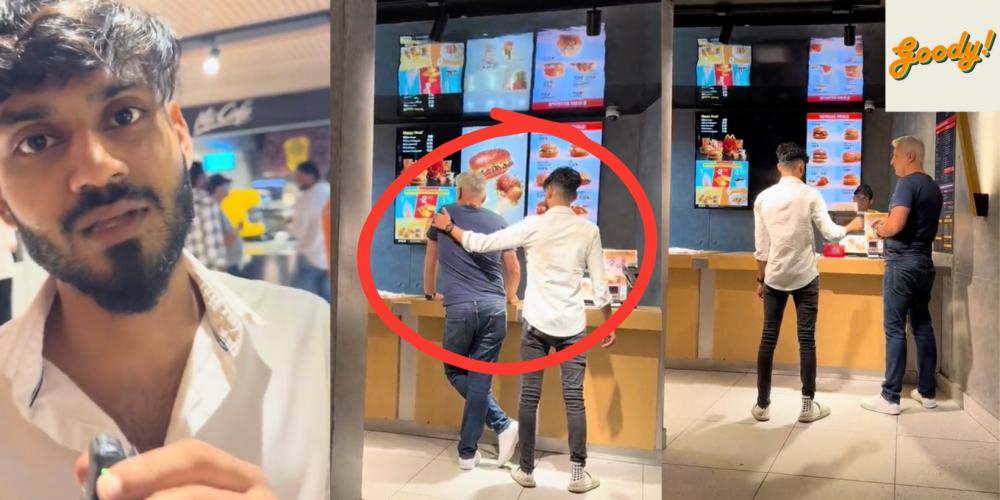Tiktoker Faces 15 Years In Prison For Prank: The Full Story
In the world of social media, pranks have become a popular way for content creators to engage their audience. However, one Tiktoker recently found themselves in serious legal trouble after a prank went too far, potentially facing 15 years in prison. This incident has sparked widespread debate about the boundaries of content creation and the consequences of crossing legal lines.
As social media platforms like TikTok continue to grow in popularity, creators are under increasing pressure to produce viral content. While some pranks are harmless and entertaining, others can have severe consequences. This article delves into the case of the Tiktoker who is now facing a 15-year prison sentence, examining the details of the prank, the legal implications, and the broader lessons for content creators.
The story has captured global attention, shedding light on the legal systems in different countries and the potential risks associated with creating content that blurs the line between entertainment and criminal behavior. Understanding this case is crucial for anyone involved in content creation or interested in the intersection of law and social media.
Read also:Understanding Gramace A Comprehensive Guide To Its Uses Benefits And Risks
Biography of the Tiktoker
Who is the Tiktoker?
Before diving into the specifics of the case, it’s important to understand who this individual is. The Tiktoker in question, whose identity has been revealed in various news reports, is a young content creator with a growing following on TikTok. Below is a summary of their key personal details:
| Name | [Name Redacted for Legal Reasons] |
|---|---|
| Age | 23 |
| Country of Origin | United States |
| Platform | TikTok |
| Followers | Approximately 1 million |
The Tiktoker had been gaining popularity for their comedic and entertaining videos, often involving pranks. However, this particular prank took a drastic turn, leading to severe legal consequences.
Understanding the Prank
What Happened During the Prank?
The prank in question involved the Tiktoker staging a fake emergency situation in a public space. According to reports, the individual pretended to be involved in a serious accident, causing panic among bystanders and prompting emergency services to respond. While the intention may have been to create a viral video, the consequences were far more serious.
Key aspects of the prank include:
- Location: A busy public area.
- Participants: Several unsuspecting individuals who believed the situation was real.
- Emergency Services: Firefighters and paramedics were called to the scene.
This incident highlights the potential dangers of pranks that involve public safety and the importance of considering the impact on others before proceeding with such content.
Legal Implications
Why is the Tiktoker Facing 15 Years in Prison?
The severity of the punishment stems from the legal system in the jurisdiction where the prank took place. In many countries, falsely reporting an emergency is considered a serious offense, as it wastes valuable resources and can endanger lives. According to legal experts, the Tiktoker could face charges including:
Read also:Regina Georges Mum The Unsung Hero Behind The Queen Bee
- False reporting of an emergency.
- Disorderly conduct.
- Potential endangerment of public safety.
These charges carry significant penalties, with a maximum sentence of 15 years in prison in some regions. The case has drawn attention to the need for clearer regulations regarding content creation and the responsibilities of creators.
Global Reaction
Public Opinion on the Case
The case has sparked a wide range of reactions from the public. Many people have expressed shock at the severity of the punishment, while others argue that the Tiktoker deserved the consequences for their actions. Social media platforms have been flooded with comments and discussions about the incident.
Some key points of public opinion include:
- Support for stricter regulations on content creation.
- Calls for education on the legal implications of pranks.
- Debate over whether the sentence is too harsh or justified.
These discussions underscore the importance of raising awareness about the potential legal ramifications of content creation.
Legal Systems and Social Media
How Different Countries Handle Prank Cases
Legal systems around the world vary significantly in how they handle cases involving pranks and social media. In some countries, the focus is on education and community service, while others impose harsh penalties to deter similar behavior.
For example:
- In the United States, false reporting of an emergency is a felony in many states.
- In the European Union, laws vary by country but generally emphasize protecting public safety.
- In Asian countries like Japan, there is a strong emphasis on maintaining public order.
Understanding these differences is crucial for content creators who operate internationally.
Lessons for Content Creators
What Can Creators Learn from This Case?
This case serves as a powerful reminder for content creators to carefully consider the potential consequences of their actions. Key takeaways include:
- Always prioritize public safety and well-being.
- Be aware of local laws and regulations regarding content creation.
- Seek legal advice when planning content that may involve sensitive issues.
By adhering to these principles, creators can avoid legal pitfalls and maintain a positive reputation in the industry.
Impact on TikTok and Social Media
How This Case Affects the Platform
TikTok has faced scrutiny in the past for the type of content allowed on its platform. This case has prompted the platform to review its guidelines and policies regarding pranks and potentially harmful content. TikTok has issued statements emphasizing the importance of responsible content creation and has taken steps to educate creators on best practices.
Some of the measures TikTok has implemented include:
- Partnering with legal experts to provide guidance to creators.
- Introducing new features to flag potentially harmful content.
- Encouraging community reporting of inappropriate videos.
These efforts aim to create a safer and more responsible environment for users.
Psychological Aspects of Pranks
Why Do People Engage in Pranks?
Psychologists have long studied the motivations behind pranks and why people engage in them. Some common reasons include:
- Desire for attention and validation.
- Need for social bonding and shared experiences.
- Expression of humor and creativity.
However, it’s important to recognize the potential harm that pranks can cause, both to the prankster and those involved. Understanding these psychological factors can help creators make more informed decisions about their content.
Conclusion
In conclusion, the case of the Tiktoker facing 15 years in prison for a prank highlights the serious consequences of crossing legal boundaries in content creation. While pranks can be entertaining, they must be approached with caution and responsibility. This incident serves as a wake-up call for all creators to prioritize public safety and adhere to legal guidelines.
We encourage readers to share their thoughts on this case and explore other articles on our site that delve into the world of social media and content creation. Together, we can promote a culture of responsible and ethical content creation that benefits everyone.
Table of Contents
- Biography of the Tiktoker
- Understanding the Prank
- Legal Implications
- Global Reaction
- Legal Systems and Social Media
- Lessons for Content Creators
- Impact on TikTok and Social Media
- Psychological Aspects of Pranks
- Conclusion
Data and statistics referenced in this article are based on reports from reputable sources such as Reuters and BBC. For further reading, please consult these sources for additional insights.


